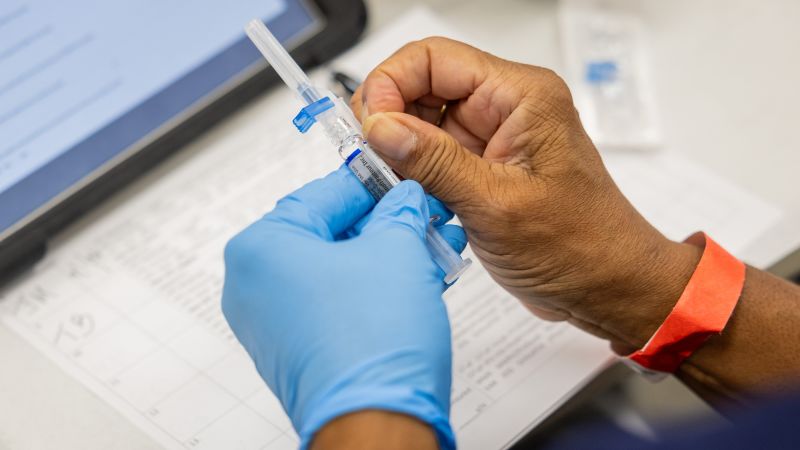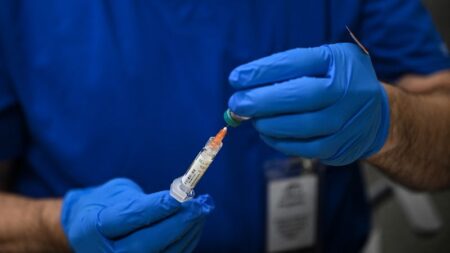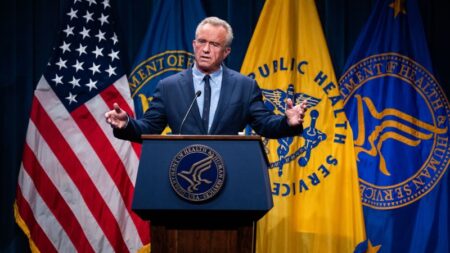Over recent months, significant funding reductions have emerged within state and local vaccination programs in the United States, raising concerns over public health infrastructure. The Unexplained removal of millions of dollars from vaccination funding stems from a review undertaken by the U.S. Department of Health and Human Services (HHS), leading to serious consequences for public health initiatives. As a result, numerous programs are anticipating cuts to staff and services, which is likely to impact vaccination rates, particularly among low-income and uninsured populations.
In the wake of these funding cuts, immunization programs across the nation are grappling with a noticeable increase in vaccine-preventable diseases such as pertussis or whooping cough. Alarmingly, more than 10,000 cases have been reported in the United States this year alone, resulting in the tragic deaths of five children. Compounded with the resurgence of measles, which has already taken three lives, concerns about reverting to pre-elimination statuses grow everyday. This astonishing development is especially disheartening to health experts who find it puzzling that during the worst outbreak in three decades, funding to combat these diseases is being withdrawn.
The primary source of funding for state-level vaccination initiatives is federal support. These federal funds, chiefly allocated through Section 317 of the Public Health Services Act, enable states, territories, and major cities to monitor vaccination data, provide immunizations, ensure vaccine safety, and combat rampant misinformation. Unfortunately, delays in disbursement due to internal reviews conducted by HHS have affected many states adversely. Andrew Nixon, HHS Director of Communications, claimed the reviews were part of the department’s effort to better utilize taxpayer dollars through a project dubbed the “Defend the Spend initiative.”
Many public health advocates argue that these funding cuts reflect a deliberate attempt by HHS Secretary Robert F. Kennedy Jr. to weaken America’s vaccination framework. Dr. Caitlin Rivers, from the Johns Hopkins Bloomberg School of Public Health, pointed out that millions of children missed their vaccinations during the pandemic and have yet to catch up. Coupled with increasing vaccine hesitancy and extant misinformation, the difficulties in maintaining adequate vaccination rates are mounting. With the resulting decline in immunizations, many communities find themselves vulnerable, stripped of the herd immunity necessary for protection against infectious diseases.
The consequences of these funding decisions appear dire. Public health programs often fall victim to success as, over time, less immediate threats lead to diminished public concern and investment. Now, five years after the Covid-19 pandemic, many states experience a “neglect cycle,” witnessing investments made during the crisis being retracted. In analyzing federal data, it is evident that approximately 40 jurisdictions awarded federal immunization funding received less than their initial targets, with certain states even experiencing decreases in funding from pre-pandemic levels. Massachusetts, New York, California, and Indiana were among those that encountered reductions.
Internally, state health officials articulate frustrations regarding the omitted rationale behind these funding allocation changes. The recent adjustments coincide with previously unspent Covid relief funds being reclaimed by the HHS, contributing further stress to state health budgets. Federal agencies claim that a new and more complex formula for determining funding amounts was implemented this year and factors such as rural population size and participation levels in vaccination programs may have influenced the outcome. Despite expectations of around $418 million in funding for immunization programs, only approximately $398 million was actually distributed.
The significant delays experienced proved chaotic for many jurisdictions. Some states, like Idaho, faced abrupt furloughs of immunization staff, ultimately impacting essential services to healthcare providers awaiting information. In larger cities such as New Haven, Connecticut, layoffs related to grant-supported positions were necessary after the state advised against incurring expenses while waiting for funding that fell short of expectations.
Despite dire circumstances prevailing in many states, there were a select few jurisdictions that did receive above-target funding. but most have felt overwhelmed, not only by these funding cuts but also by staffing shortages across public health sectors due to prior cuts and ongoing budget constraints. Key advocates in public health reiterated concerns that failing to reverse current trends will pave the way for outbreaks of diseases like measles and whooping cough, reiterating the pressing need for sustained investment and support for immunization programs that safeguard the public health framework. Dr. Brian Castrucci of the de Beaumont Foundation aptly summarized the situation, describing the current phase as the “deliberate dismantling of the public health safety net.”












